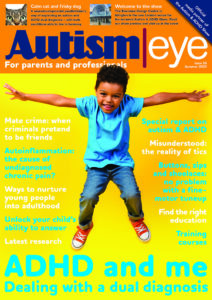An engineer is developing a motion sensor system to help identify the emotions that non-verbal autistic children are feeling.
The inventor is Cheol-Hong Min, an assistant professor of engineering at the University of St Thomas, in Minnesota. He says his system will track the non-verbal children’s behaviours and motions.

Cheol-Hong Min: designing a system for non-verbal autistic children to help identify their emotions
The device will analyse sound and video from its tracking system. It will then align this information with knowledge of the emotions that the children are communicating.
Objective viewpoint of behaviour
He hopes this will result in an objective viewpoint of behaviour to inform treatment.
Min said: “The ultimate goal is also real-time feedback. Say, when the child is making some noise it would alert the parent to know they’re not happy.
“Otherwise you have to be with the child 24/7.”
The system involves creating a complex emotional map through an algorithm.
Engineering student John Fetzner is working on this aspect of the research. He is breaking down video and audio of children with autism. The researchers hope that with each inputted example, he increases the accuracy of the algorithm.
The system already detects stimming, the repeated physical movements associated with people with autism.
Different emotions of non-verbal children
Fetzner said: “The goal is to eventually not only use the recognition of the stimming to determine if it’s a positive or negative emotion, but potentially break those out into different emotions like angry or sad, or with the positive side to happy and satisfied.
“Improving the algorithm is like if we gave you a set of words you didn’t know and had a dictionary to look it up, and each time you get a new word you can put it in your dictionary and add it, to make the dictionary better. The algorithm gets better at what it’s doing.”
Related:
Published: 23 August 2017















